How to Take Good Care of God's Gift to Cooks!
Upon the recommendation of numerous cookbook authors and professional chefs, I purchased a couple stainless steel cookie sheets (not inexpensive-about $16 each) over nine years ago. WHY did I do such a thing? I'd been so frustrated at how my cookies (especially chocolate chip) and other baked goods looked and tasted after baking on my aluminum cookie sheets. I'd read over and over that it's hard to fail when baking with stainless steel.
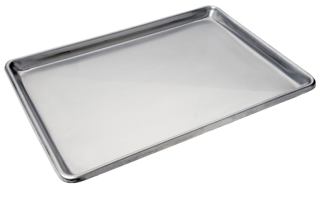
And the other reason-I wanted to remove all aluminum from my life. We all know that aluminum leaches into the bloodstream and hence into the brain-using aluminum is a fast track to Alzheimers.
So I thought it would be interesting to report back after all these years. My first test run was on my chocolate chip recipe. WOWEE! Let's just say the end result was fantastic (over and over on every batch every time). And it's the same with every type of cookie I've been making.
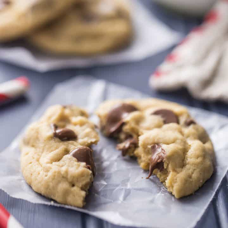
The bottom line? I am solidly sold and don't grieve one bit about the cost of these cookie sheets, and I enthusiastically recommend them. Stainless steel anything is God's gift to cooks! If you haven't made the switch, do seriously consider it.
All this said, and considering quality stainless is expensive, I thought I'd share a few tips on how to take good care of our stainless steel stuff, in case you're going this route as well:
TO REMOVE THOSE ANNOYING PRICE STICKERS: Soak the area with warm water, then scrape off with your fingernail or with a hard-plastic spatula. A bit of rubbing alcohol, or a citrus oil based cleaner, will remove any remaining glue.
WHEN USING A PAN FOR THE FIRST TIME: Wash it well with soapy warm water and dry thoroughly.
TO REMOVE THOSE WHITISH OR CHALKISH DEPOSITS INSIDE THE PAN: Boil water with some white vinegar, allowing your pan to cool, then wash it with warm, soapy water. To help prevent white spots and pitting inside your pan, add salt to your cookware only after the water has reached a boil.
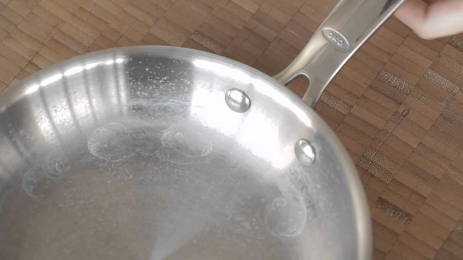
WHEN BURNT FOOD IS STUCK IN THE PAN: Cover the stuck foodstuffs with warm soapy water, allow to soak for some time, then boil for 10 minutes, allow it to cool, then use a soft cloth, or a nylon scourer if stubborn, and warm, soapy water.
WHEN THE DISHWASHER DOESN'T GET THE PAN CLEAN: You might select a Pre-wash cycle if your pan's instructions indicate it is safe to clean in the dishwasher.
WHEN THERE ARE SPILLS OR OVERFLOWS: Wash or clean the pan's exterior before placing it again over heat. If you don't, it will bake on and eventually your once beautiful pan will turn ugly and it'll take more time and elbow grease to get it clean.
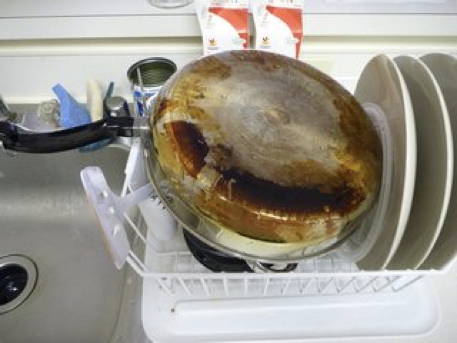
IF THE PAN WAS LEFT TO COOL ON STOVE TOP AND LID WON'T COME OFF: Warm the pan, then twist the lid to remove it.
IF THE PAN WAS LEFT EMPTY ON A HEATED SURFACE: Allow it to cool slowly; never ever immerse it in cold water.
IF THE PAN WAS LEFT ON A HEATED SURFACE AND LIQUID HAS DRIED AND YELLOW OR BLUE STREAKS APPEAR: On polished stainless, use a metal cleaner, such as Wenol or Red Bear, with a soft cloth. On satin stainless, use a nylon scourer, such as Scotch-Brite.
IF THERE ARE SCRATCHES ON PAN'S SURFACE AFTER REPEATED WASHINGS: Change your cleaning product to a gentler kind, such as Bon Ami or Bar Keeper's Friend.
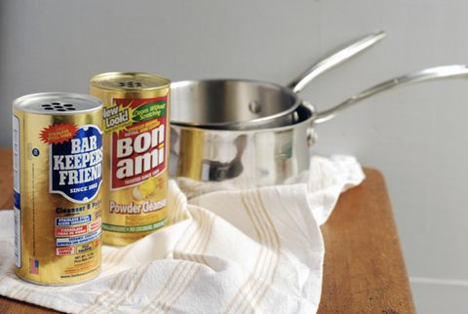
Finally, CLEANERS NOT RECOMMENDED FOR STAINLESS SURFACES: Bleach and ammonia...never, ever!
- www.everythingkitchens.com
- www.bakingamoment.com
- www.youtube.com
- www.cooking.stackexchange.com
- www.cosmopolitan.com
 Alice Osborne
Alice Osborne
Weekly Newsletter Contributor since 2006
Email the author! alice@dvo.com
